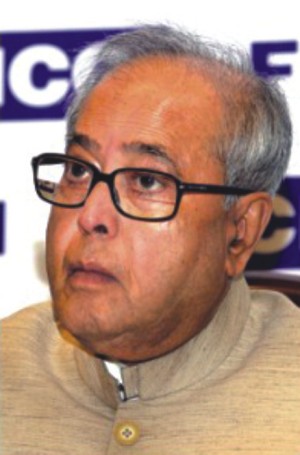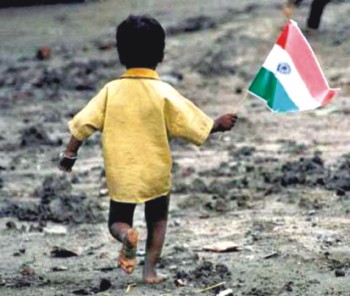| Home - Back Issues - The Team - Contact Us |
 |
| Volume 10 |Issue 10| March 11, 2011 | |
|
|
Neighbours What Ails India? Ravi Velloor Huge promises and middling performance. Elation and frustration. India can be infuriating for even its most fervent well-wishers. Every time it looks like it has settled into a fast and steady trot, some event or a chain of developments take place that rein in the massive sinews of Asia's second largest power. At no time in recent history has its global prestige been greater; yet, at home, things could be so much better This was to have been the year a resurgent Indian economy was tipped to outpace its giant neighbour China. Political leaders, even those prone to understatement such as Prime Minister Manmohan Singh and finance minister Pranab Mukherjee, had been willing to hint at double digit expansion. Rising rural demand was feeding a hunger for manufactured goods that fired industrial growth. The 'Hindu rate of growth'–the mildly derogatory term coined by the economist Raj Krishna for India's glacial economic expansion in the first decades after independence, when the growth rate stagnated at 3.5 per cent or less–had yielded to a new pace three times quicker. This was thanks to the liberalising policies introduced by Krishna's sometime colleague at the Delhi School of Economics– Prime Minister Singh.
More recently, leaders of all five permanent members of the UN Security Council have beaten a path to India's door and carted home deals running into billions of dollars. Yet, if the current mood in India is any indication, the country is at risk of having to surrender its swagger. Food inflation is running at close to 15 per cent, a huge tax on the third of India that lives in poverty. Investors, who pumped a record US$28 billion into the Indian markets last year, are pulling money out of stocks and bonds, leaving Mumbai's Sensex as the world's worst performing stock index after Cairo's last month. Foreign direct investment is down by a third as delayed environmental clearances frustrate investors. The stench of corruption has swept past its traditional breeding grounds in politics and bureaucracy to taint the other two estates–media and the judiciary. Some reports say more than a trillion dollars–an amount almost equivalent to India's gross domestic product– is stashed away in foreign banks. Late last year, leaked phone conversations between a lobbyist and well-known media figures, industrialists and politicians revealed that some prominent journalists had served as power brokers to help keep former telecommunications minister A Raja in his post, despite his role in one of India's biggest scams. Amid the mess stands Dr Singh, a man of immense personal integrity, yet seemingly unable to stem the rot. In part, that is because of the demands of coalition politics–when your most important coalition partner demands a “lucrative” portfolio, it is difficult to decline. “India,” says analyst Brahma Chellaney, a strategic affairs professor at New Delhi's Centre for Policy Research, “is witnessing not mere corruption, but national plunder. When the head is rotten and putrid, the body cannot be healthy. India's ability to secure its interests is being undermined by the deterioration of the state.” Law and order has become a serious issue, manifesting not just in the Maoist violence in the hinterland that claimed 998 lives last year but also in the way village councils condone “honour killings” or arbitrarily punish young lovers if they marry outside their castes.
Last month, a senior district figure in Maharashtra state was lynched by the kerosene mafia when he tried to crack down on adulterated supplies. In the national capital, notorious for the 'eve-teasing' phenomenon, young men on motorbikes try to pass dangerously close to attractive policewomen on beat duty. Then there is policy paralysis. When PM Singh was returned with a stronger mandate in 2009, there was every expectation that he would move faster on the economic reforms he had first unleashed as finance minister in 1991. Those hopes are yet to be realised. The government's fiscal deficit is alarmingly large, thanks to a bunch of poorly administered subsidies. Fear of upsetting farmers has prevented the government from moving on agriculture reform. The result is that farm productivity has lagged industrial growth. So, food prices are soaring as supply is unable to keep pace with demand. Inflationary expectations cause widespread hoarding of commodities. TN Ninan, India's most respected business journalist, recently made a startling point: Twenty years ago, he pointed out, a Maruti subcompact car with a fitted air-conditioner cost 200,000 rupees ($4,400 at current exchange rate). Today, it is priced at 250,000 rupees ($5,500). In contrast, the price of onions, which touched 5 rupees (11 US cents at current exchange rate) per kilogram in the 1980s sparking public outrage, has today reached 70 rupees ($1.5) a kg. The reason for the unprecedented food inflation is that, in contrast to industry, agriculture, which offers a living to six out of 10 Indians, has not been reformed. And so, as food prices soar, the government appears helpless, speaks in different voices and, as it gropes for solutions, reaches for the handy button of higher interest rates. This causes shares to tank as industry faces higher borrowing costs, hurting margins. Ultimately, this will have an impact on growth. At the leadership levels too, not everything is hunky dory. Finance minister Mukherjee, who heads dozens of government committees, increasingly talks about retirement. The coldly efficient home minister P Chidambaram, who can claim credit for preventing any major terror attacks on the nation since taking charge in the wake of the Mumbai massacre in 2008, is tired of his charge and would rather return to finance. Meanwhile, Dr Singh and Sonia Gandhi aren't as tight as they were during the government's first term. The duo are said to have had ruffles since Dr Singh was returned to power with a larger mandate and subsequently showed signs of asserting himself. Gandhi has also been in indifferent health lately and missed the annual Republic Day Parade. And with last year's state elections in Bihar having handed her party a massive drubbing, doubts have been raised about the vote gathering abilities of her son and possible successor to Dr Singh, second-time MP Rahul Gandhi, the party's chief campaigner in those polls. This article was first published in The Straits Times, Singapore.
Copyright
(R) thedailystar.net 2010 |

